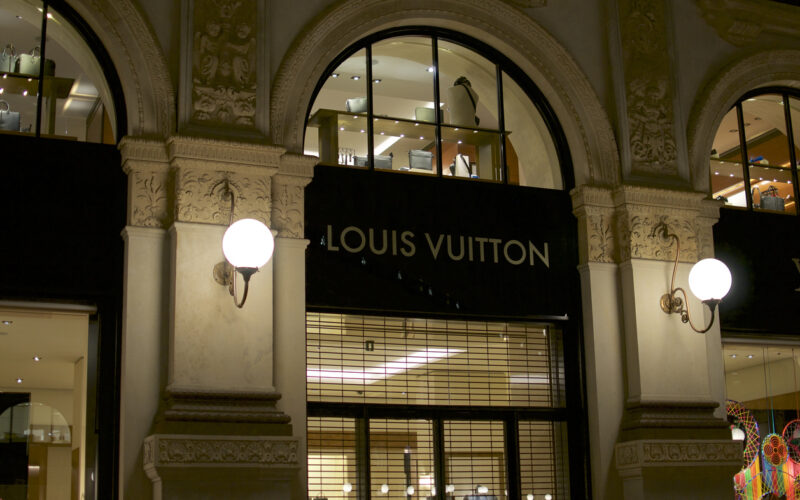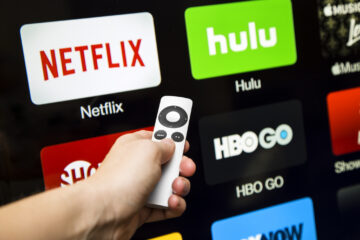Marlon Trottman via iStockphoto
By Marvi Ali
In the realm of luxury, a seismic shift is underway as Moët Hennessy Louis Vuitton (LVMH), the Parisian titan of elegance, grapples with a growth slowdown. LVMH is a multinational luxury goods conglomerate headquartered in Paris, France. With a diverse portfolio spanning fashion, leather goods, perfumes, cosmetics, wines, spirits, watches, and jewelry, LVMH boasts an impressive collection of 75 prestigious brands, including some major names like Louis Vuitton, Dior, Givenchy, Moët & Chandon, and more.
After the release of their third-quarter results a couple months ago, the LVMH stock faced significant pressure falling to its lowest level of the year. LVMH’s report showed quarterly revenue growth of 9% year on year, a steep drop from 17% in the second quarter. Analysts had forecast growth of around 11%. The company is attributing this revenue slowdown to normalization following a Covid pandemic boom and flagged an “uncertain economic and geopolitical environment.”Although most segments showed growth, albeit slowed, LVMH’s wine and spirits sector experienced a 14% decline, which LVMH attributed to “post-Covid normalization of demand and the continued high inventory levels of retailers. “After three…outstanding years, growth is converging toward numbers that are more in line with historical average,” said LVMH’s chief financial officer, Jean-Jacques Guiony according to Reuters.
China’s economic slowdown and a possible U.S. recession make the future of the wealthy even more uncertain
Many luxury companies have enjoyed buoyant valuations due to a perception that their customers are more resilient in the face of inflation. But that is changing. According to the UBS annual wealth report, the number of millionaires fell from 62.9 million at the end of 2021 to 59.4 million at the end of 2022. This reduction in wealth is concentrated in wealthier regions and countries, such as North America, Europe and Asia Pacific. Furthermore, China’s economic slowdown and a possible U.S. recession make the future of the wealthy even more uncertain. LVMH is also contending with lackluster demand in China, one of its biggest markets, where an economic rebound that followed the lifting of Covid-19 restrictions late last year has faded fast.
LVMH’s performance raises questions about the future of the luxury goods sector. Being one of the world’s largest luxury goods conglomerates, LVMH often serves as a harbinger of what’s to come. In the face of a challenging economic environment marked by high inflation, rising interest rates, and the potential for a recession, luxury goods companies like LVMH often experience a slowdown in sales as consumers become more cautious with their discretionary spending. Shifting consumer preferences towards practical and value-oriented purchases can impact the demand for high-end products, while reduced international tourism further exacerbates the decline.
Luxury goods are frequently perceived as investments due to their quality and craftsmanship, maintaining their allure even during challenging economic times.
Despite short-term setbacks, luxury brands often maintain their appeal and adapt to changing consumer sentiments, emerging stronger over the long term. For example, while the pandemic posed challenges in 2020, the company remained resilient and was able to weather the pandemic crisis well compared to other luxury goods companies. So, in times of economic downturn, the luxury goods sector can actually exhibit certain defensive qualities. These brands often possess a resilient and enduring brand reputation, built over generations, which can act as a shield against economic storms. Luxury goods are frequently perceived as investments due to their quality and craftsmanship, maintaining their allure even during challenging economic times. Moreover, luxury brands cater to a high-net-worth consumer base, whose financial well-being may be less affected by financial crises, thereby providing a cushion for these companies.
However, the luxury goods sector is not impervious to economic challenges. It faces vulnerability due to its reliance on the income levels of its clientele, with economic downturns impacting the disposable income of high-net-worth consumers, potentially reducing their appetite for luxury purchases. Furthermore, luxury brands heavily dependent on international tourism can be significantly affected by travel restrictions and reduced tourist inflow during recessions. A shift in consumer behavior towards more practical and value-oriented spending can also lead to decreased demand for luxury products, while the price sensitivity associated with luxury goods may deter consumers from making high-end purchases during economic crises. In navigating these challenges, luxury brands must employ strategic measures to adapt effectively to the changing economic landscape.
LVMH has been prioritizing both organic and inorganic growth by strategically expanding in emerging markets, catering to the rising middle class while preserving brand identity.
While it’s difficult to predict the future of the entire luxury industry, it does seem that LVMH is well-positioned for a promising future in the ever-evolving luxury industry. LVMH has been prioritizing both organic and inorganic growth by strategically expanding in emerging markets, catering to the rising middle class while preserving brand identity. And, recent acquisitions, like Tiffany & Co. and Bulgari, extend reach and diversify their already large portfolio.Meanwhile, the competitive landscape for LVMH sends mixed signals as to the health of the sector. Just a few weeks after LVMH’s third quarter reports were released, Kering, a French luxury group with a brand portfolio including Gucci, Yves Saint Laurent, Balenciaga, and Bottega Veneta, reported their sales dropped 9%, seemingly confirming this trend of luxury slowdown. Yet, this could be in large part due to Gucci’s struggle to benefit from the robust post-pandemic luxury goods rebound and loss of market share to LVMH’s Dior and Louis Vuitton. This loss of market share can largely be attributed to a phase of rapid growth under Alessandro Michele’s creative vision, marked by a unique vintage aesthetic. However, this success led to widespread replication of its iconic designs, diluting the brand’s exclusivity. The brand’s omnipresence in the fashion industry through celebrity endorsements and social media exposure contributed to overexposure, potentially causing luxury consumer fatigue. However, Hermes has had better fortune than Kering, with sales up 16%, perhaps suggesting only a temporary luxury sector gloom rather than a major systemic issue.




